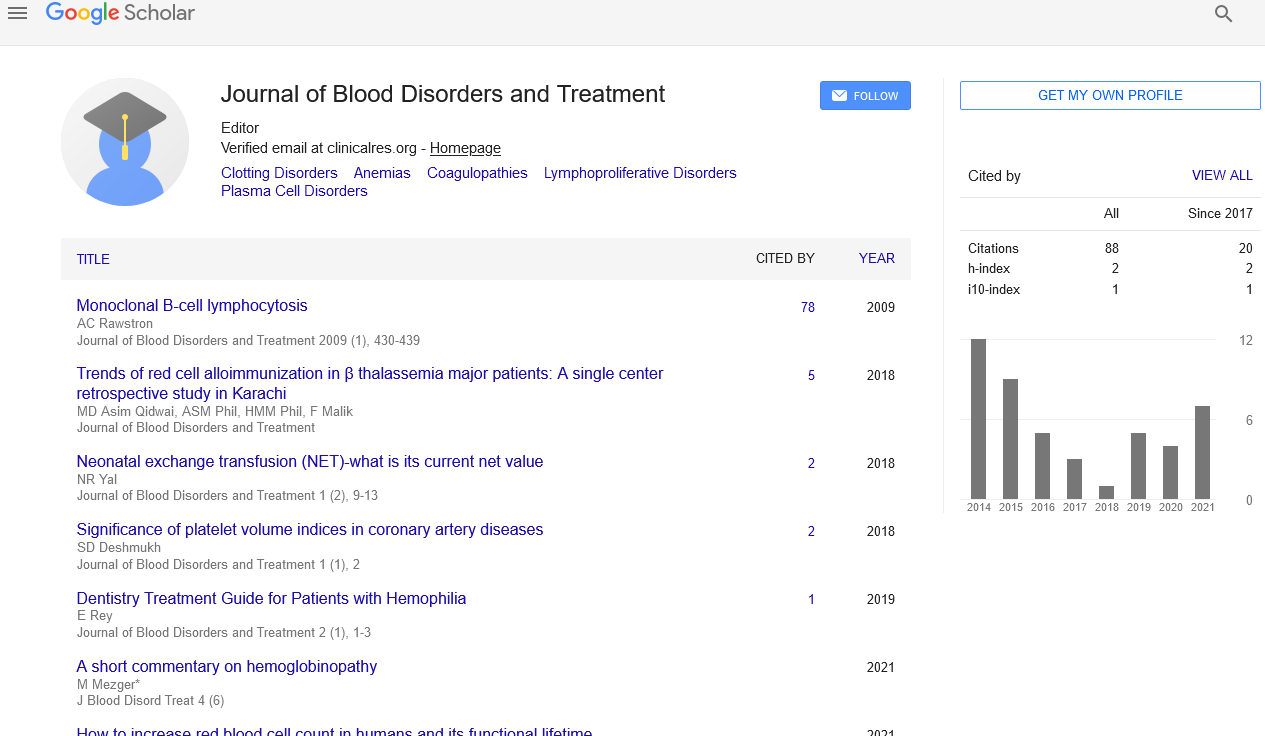Viewpoint on the ideal transfusion procedures
Received: 07-May-2022, Manuscript No. PULJBDT-22-5102; Editor assigned: 09-May-2022, Pre QC No. PULJBDT-22-5102 (PQ); Reviewed: 16-May-2022 QC No. PULJBDT-22-5102 (Q); Revised: 18-May-2022, Manuscript No. PULJBDT-22-5102 (R); Published: 26-May-2022, DOI: 10.37532/puljbdt.2022.5(3)24
This open-access article is distributed under the terms of the Creative Commons Attribution Non-Commercial License (CC BY-NC) (http://creativecommons.org/licenses/by-nc/4.0/), which permits reuse, distribution and reproduction of the article, provided that the original work is properly cited and the reuse is restricted to noncommercial purposes. For commercial reuse, contact reprints@pulsus.com
Abstract
Since the Transfusion Requirements in Critical Care (TRICC) trial's findings, which supported the limitation of Red Blood Cell (RBC) transfusions in the sickest patients, were published, more than ten years have passed. Several accounts show that transfusion procedures have changed since then. Allogeneic blood transfusions have a long history of being associated with a variety of dangers and issues. While some dangers have been greatly reduced thanks to developments in blood banking, they are unlikely to ever be completely removed. Other dangers and issues are more challenging to handle since their causes seem to be more elusive and subtle. Leukocytes, leftover plasma, and blood storage issues have all been looked into as potential sources of negative effects from banked allogeneic blood. Notably, numerous clinical research investigating the effects of blood storage age on patient outcomes are now being conducted. If the results of these experiments show that the currently approved shelflife of banked blood is too lengthy and should be reduced, it might significantly alter the transfusion practice landscape.
Key Words
Transfusion; Leukocytes; Cryo-precipitation
INTRODUCTION
Alogeneic blood safety has been a significant source of worry, and it is best to avoid subjecting patients to risks that aren't justified by clear advantages. Three key factors—a circulatory (volume) effect, a rheological effect (blood flow/viscosity), and oxygen transportation— can be linked to the potential effectiveness of transfused RBC. RBC transfusions are typically not advised today merely as a volumeexpander, even though their impact on circulatory volume may be considerably more immediate than their impact on oxygen transportation (possibly except for some cases of trauma and massive blood loss). This influence may be viewed as more of a foe than a friend in some situations. Based on the impact on a patient's outcome and if transfusion improves it, a clinically meaningful conclusion regarding the safety and effectiveness of transfusion should be made. According to a quick review of several cohort studies from the past ten years, receiving blood transfusions has been associated with higher rates of short- and long-term mortality, longer stays in hospitals and intensive care units, and a higher incidence of various complications and morbidities (systemic inflammatory response syndrome, atrial fibrillation, renal failure, prolonged ventilator support, serious infections, cardiac ischemia, etc.) In several groups of individuals who underwent surgery and those who did not. Although the relationships frequently hold after adjusting for the relevant confounders, the fact that these data are based on retrospective uncontrolled studies raises the likelihood of a bias toward transfused patients being sicker at baseline. Furthermore, results from RCT frequently either support these findings or show that reducing blood transfusions to patients has no adverse effects. In patients without significant cardiac comorbidities, restrictive transfusion strategies decreased the rate of infectious complications while having no negative impact on the occurrence of other complications like mortality, cardiac event stroke, or thromboembolic events, according to a meta-analysis of 17 trials involving a total of 3,746 patients.
RED BLOOD CELL TRANSFUSION RECOMMENDATIONS
This observation's foundation in retrospective uncontrolled investigations is a fact. To regulate blood transfusion procedures, clinicians have long tried to develop indications for blood transfusion. The "10/30" guideline, which states that the Hb of surgical patients should be maintained at or above 10 g/dL, is likely the oldest and most well-known of these indications. Although this rule has been applied in non-surgical situations as well (especially in the intensive care unit), its validity has been frequently questioned because it is not supported by any actual clinical evidence. The CAP guidelines, which are the oldest of all the recommendations made here, concentrate on acute (surgical and non-surgical) as well as chronic anaemia disorders. The Hb before the blood loss, the amount of blood loss, and the presence of additional medical disorders that may impair anaemia tolerance are the key criteria to take into account when deciding whether to transfuse patients with acute anaemia. In light of these factors, RBC transfusions are typically recommended if Hb is less than 6 g/dL and infrequently recommended if it is higher than 10 g/dL. The choice for individuals with 6 g/dL to 10 g/dL relies on the degree of blood loss, the presence of underlying heart illness, and general clinical conditions.





